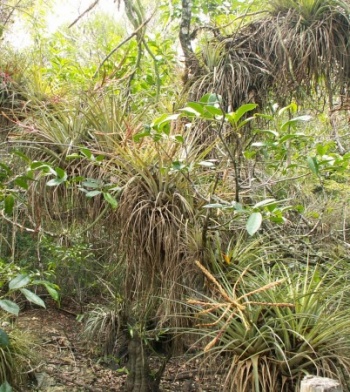Overview
Cayo Coco and its neighbouring islands of Cayo Romano, Cayo Paredon Grande and Cayo Guillermo are part of the island chain of Jardines del Rey at the northern shore of Cuba.
The islands are well known for tropical beaches, all-inclusive resorts and some great birdwatching. They are linked to the mainland by road.
Birds
Notable Species
Several endemics can be found here, notably Zapata Sparrow, Oriente Warbler and Cuban Gnatcatcher. An endemic subspecies of Thick-billed Vireo occurs only on one island, Cayo Paredon Grande. Bahama Mockingbird has its Cuban stronghold here as well. Many waders, ducks and New World warblers are wintering here. Among the waders Piping Plover is of interest. Key West Quail-Dove can also be found.
Check-list
Birds you can see here include:
West Indian Whistling Duck, American Wigeon, Blue-winged Teal, Northern Shoveler, Ring-necked Duck, Lesser Scaup, Red-breasted Merganser, Pied-billed Grebe, American Flamingo, Wood Stork, American White Ibis, Glossy Ibis, Roseate Spoonbill, Black-crowned Night Heron, Green Heron, Western Cattle Egret, Great Blue Heron, Great Egret, Reddish Egret, Tricolored Heron, Little Blue Heron, Snowy Egret, Brown Pelican, American White Pelican, Magnificent Frigatebird, Neotropic Cormorant, Double-crested Cormorant, Anhinga, Turkey Vulture, Western Osprey, Gundlach's Hawk, Northern Harrier, Cuban Black Hawk, Clapper Rail, Common Gallinule, American Coot, Black-necked Stilt, Grey Plover, Semipalmated Plover, Killdeer, Wilson's Snipe, Short-billed Dowitcher, Long-billed Dowitcher, Greater Yellowlegs, Lesser Yellowlegs, Willet, Spotted Sandpiper, Ruddy Turnstone, Red Knot, Sanderling, Least Sandpiper, Piping Plover, Whimbrel, Stilt Sandpiper, Black Skimmer, Laughing Gull, Ring-billed Gull, American Herring Gull, Lesser Black-backed Gull, Caspian Tern, Royal Tern, Cabot's Tern, White-crowned Pigeon, Eurasian Collared Dove, Mourning Dove, Zenaida Dove, White-winged Dove, Common Ground Dove, Key West Quail-Dove, Blue-headed Quail-Dove, Smooth-billed Ani, Great Lizard Cuckoo, Antillean Palm Swift, Cuban Emerald, Cuban Trogon, Belted Kingfisher, Cuban Tody, West Indian Woodpecker, Cuban Green Woodpecker, Northern Crested Caracara, American Kestrel, Merlin, Peregrine Falcon, Cuban Pewee, Loggerhead Kingbird, La Sagra's Flycatcher, Cuban Vireo, Thick-billed Vireo, Cedar Waxwing, Northern Rough-winged Swallow, Cave Swallow, Cuban Gnatcatcher, Grey Catbird, Northern Mockingbird, Bahama Mockingbird, Red-legged Thrush, House Sparrow, Ovenbird, Worm-eating Warbler, Northern Waterthrush, Black-and-white Warbler, American Redstart, Cape May Warbler, Northern Parula, Magnolia Warbler, Black-throated Blue Warbler, Palm Warbler, Myrtle Warbler, Yellow-throated Warbler, Oriente Warbler, Mangrove Warbler, Tawny-shouldered Blackbird, Cuban Blackbird, Greater Antillean Grackle, Zapata Sparrow, Cuban Bullfinch, Yellow-faced Grassquit, Western Spindalis
Site Information
History and Use
Some parts of the islands are protected (eg El Baga Parque Natural). There are several resorts on the islands of Cayo Coco and Cayo Guillermo and more are being built. However, tourism concentrates at some spots and you won't see any tourists in large parts of the island.
Areas of Interest
Cayo Paredon Grande
To reach this island drive east from Cayo Coco to Cayo Romano and then turn left (north) to the small island of Cayo Paredon Grande. There is a lighthouse at the northern tip. Spend time around the lighthouse and along the roads to look out for Bahama Mockingbird, Thick-billed Vireo, Cuban Gnatcatcher, Oriente Warbler and Western Spindalis.
La Cueva de Jabali Nightclub
This nightclub is located in some caves on Cayo Coco. However, behind the nightclub are two bird baths and feeders which attract Key West Quail-Doves and other species. Take a small path left of the entrance to get to the spot.
Pedraplen a Cayo Coco - Cayo Coco dam
The dam from Moron to Cayo Coco is interesting for Gulls and Terns. Be careful when stopping your car.
Playa Colorada
This beach is located at the eastern tip of a small peninsula on Cayo Coco. Piping Plover can be seen here.
El Baga Parque Natural
The area of the old airport holds species like Oriente Warbler, Zapata Sparrow, Cuban Vireo and Cuban Gnatcatcher. It's located on the western side of Cayo Coco ca 5km from Playa Coco Hotel.
Access and Facilities
Cayo Coco can be reached by car from Moron or by air. There are national flights from Havana or charter flights from Europe to the island. There are only all-inclusive resorts on the islands, most of them rather expensive. There is some public transport between Cayo Guillermo and Cayo Coco, however to reach Cayo Paredon Grande a private car is needed. There are excellent nature guides on the islands which can be booked at the hotels. Ask for Odey, he can show you all the special birds in one day.






